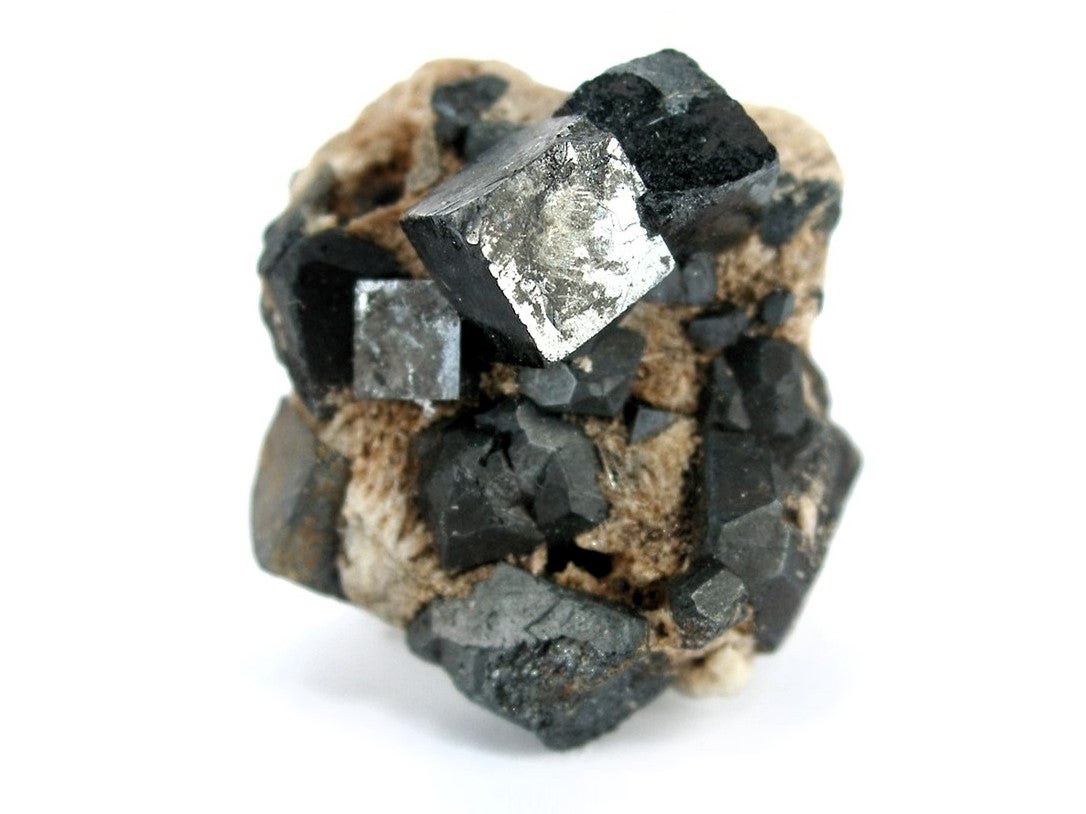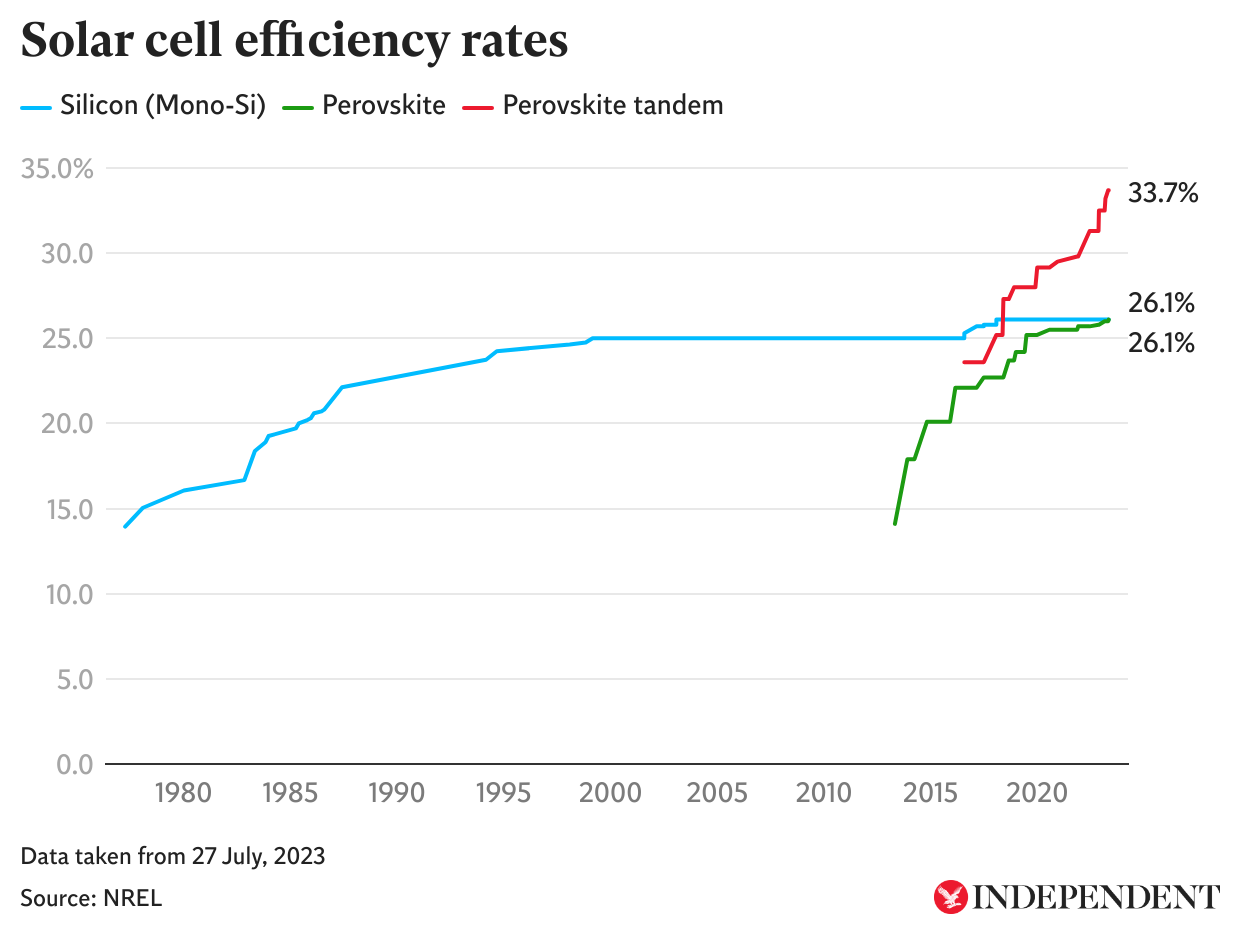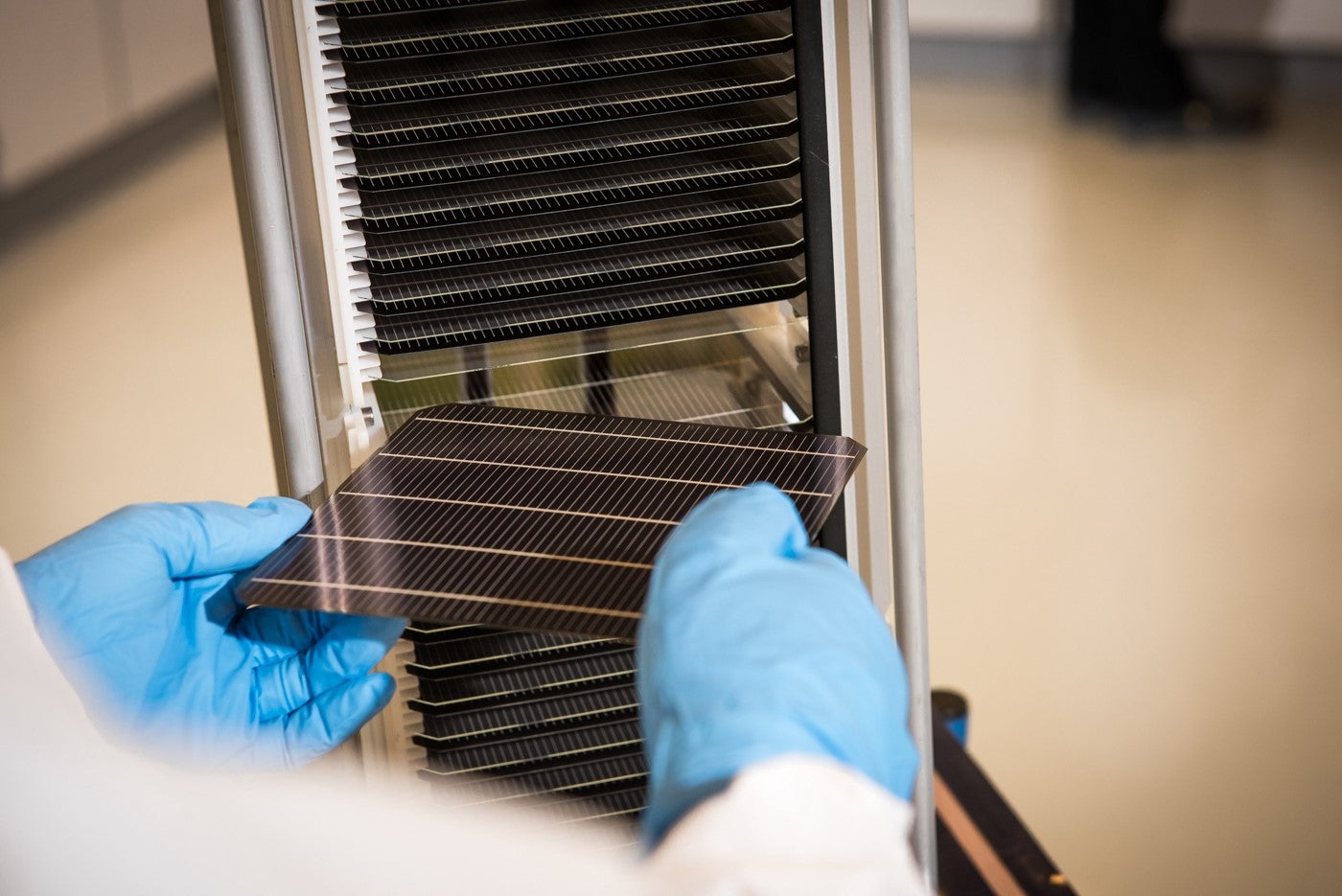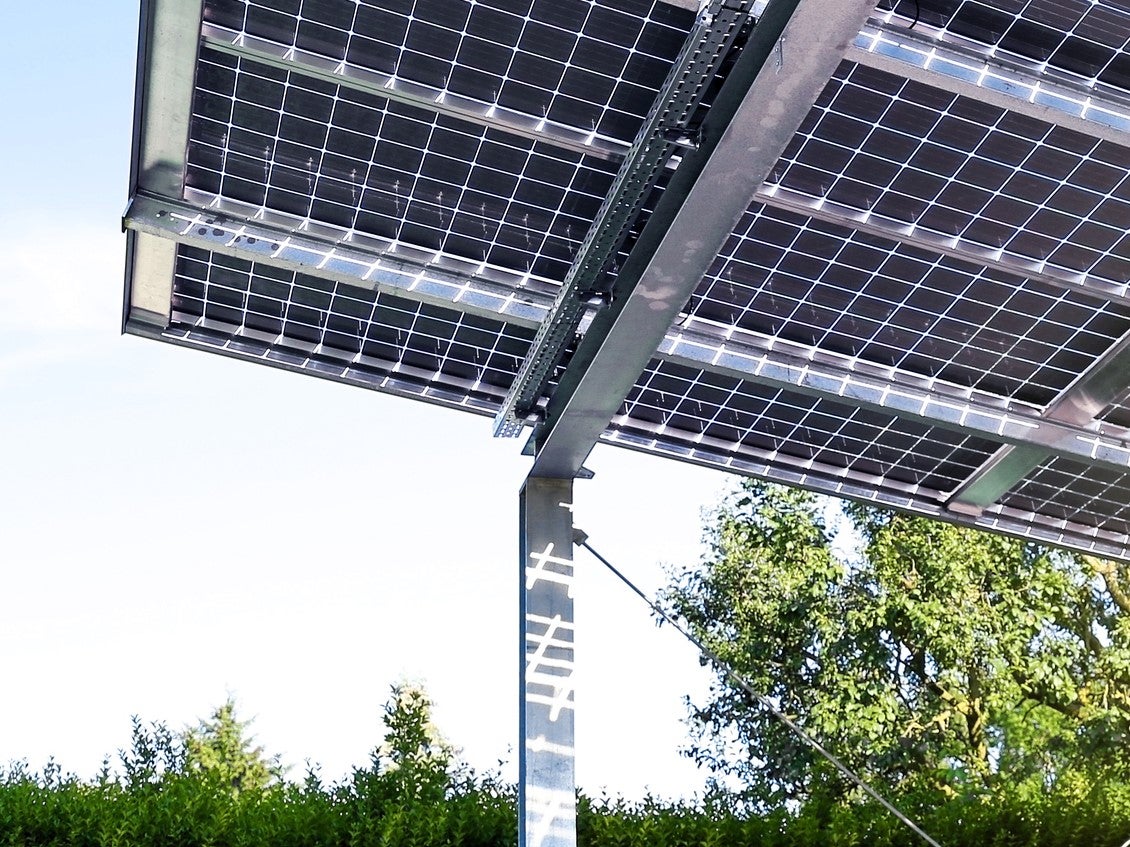Hundreds of years after it was discovered, one material is about to change the world
Rapid breakthroughs in recent months mean 2023 could be the year that perovskite’s potential is finally realised, bringing cheaper and more efficient ways of harvesting the Sun’s energy, writes Anthony Cuthbertson


No one knows who discovered perovskite. A sample of the crystal was collected in the Ural Mountains in Russia in the early 19th century, before making its way to the lab of German mineralogist Gustav Rose, who officially named it in 1839. He didn’t know it at the time, but its extraordinary properties would be hailed nearly 200 years later for their potential to revolutionise renewable energy.
This realisation began in 2009, when researchers in Japan began tinkering with the material and saw that shining light on it created a small electric charge. The team were only able to deliver 3.8 per cent power conversion efficiency on a tiny surface – a fraction of the roughly 20 per cent efficiency of conventional silicon solar panels – but the revelation spawned a brand new field of research.
By 2017, phenomenal progress meant efficiency rates had already passed 22 per cent, leading physics professor Valy Vardeny from the University of Utah to refer to it as a “miracle material”. Others described it as a “wonder material” capable of meeting the ambitious net zero targets being set at the time – just so long as its potential could be realised outside of a laboratory.
In May this year, a new efficiency record on a commercial-sized solar cell, finally bringing mass production within reach. The breakthrough was achieved by UK startup Oxford PV, who set a world record of 28.6 per cent efficiency using a tandem perovskite-silicon design that uses both materials to capture energy from different parts of the solar spectrum.
The spin-out from the University of Oxford is now in the process of commercialising the technology, aiming to begin full-scale production at a factory in Germany later this year. If successful, the first customer orders will be fulfilled by mid 2024.
“Current silicon solar panels have reached their physical limits. We’ve got a way to transform the efficiency of these solar cells with perovskite,” Chris Case, Oxford PV’s chief technology officer, told The Independent. “There is no miracle to this material – it’s unique but it’s just science. Material advancements are just manipulations of atoms at the atomic scale.”
Dr Case said his company has a roadmap to push the efficiency rate of its commercial panels beyond 30 per cent within the next couple of years, adding that his firm’s technology will work for both residential rooftops and utility-scale solar farms. Combined with adequate battery storage, these rates would be enough to satisfy the energy demands of people living in high density areas.
The theoretical limit for this multi-junction solar cell is 43 per cent – vastly greater than the 29 per cent of just silicon by itself. Scientists believe they can reach roughly 90 per cent of this theoretical limit, with small scale systems already hitting efficiency rates greater than 33 per cent under lab conditions.

The record was set by researchers from the King Abdullah University of Science and Technology (KAUST) in Saudi Arabia, who set the benchmark following massive amounts of state funding into clean energy technologies to combat the damage caused by the exploitation of the country’s vast oil reserves.
Stefaan De Woolf, interim associate director of the Kaust Solar Centre, said that striving for new records “is critical to rapidly achieving renewable energy goals towards combating climate change”.
Despite perovskite being abundant within the Earth’s mantle – the perovskite used in solar cells is entirely synthesised from common materials like bromine and chlorine.

This makes it much cheaper to produce than silicon cells, however until recently scientists have struggled to make it durable enough to produce on a significant scale. Its efficiency degrades from water, heat and oxygen, all of which commercial solar panels are frequently exposed to.
“The biggest challenge by far is durability and reliability,” said Dr Case. “We already have great efficiency – much greater than current silicon cells – so most of our research and development is spent enhancing reliability, not efficiency.”
Commercial solar panels typically have a lifespan of around 20 years, so this is the target that Oxford PV set for its next-generation panels. Using accelerated stress testing of its product, the startup claims the first perovskite-silicon solar cells to reach customers will have a lifespan of between 20-30 years.
If successful, the company could be the first in the world to mass produce such high efficiency solar panels. Others hoping to achieve similar feats include the Chinese startup Renshine Solar, which is working on a purely perovskite cell they claim can be manufactured at half the cost of silicon cells. The theoretical limit of perovskite solar cells (PSCs) is a relatively modest 33 per cent compared to tandem perovskite-silicon cells, but Renshine Solar claims its factory will be fully operational by September.
Perovskite has also shown promise for novel methods of boosting the efficiency of solar panels even further, with the US Department of Energy’s National Renewable Energy Laboratory (NREL) recently unveiling a new double-sided solar panel capable of generating electricity from the Sun’s energy on both sides. By harvesting reflected sunlight, the system could increase the overall power output of a solar panel by up to 20 per cent.

Other recent advances involving perovskite include self-healing panels that can recover 100 per cent of their original efficiency after being damaged by radiation in space. Beyond solar, perovskite could have profound implications for everything from batteries to telecommunications, with some scientists claiming it could make the internet 1,000 times faster.
Its original founding in the Urals may forever remain mysterious, but the realisation of its true potential on a global scale could well prove to be miraculous. Professor Vardeny, who was the first scientist to describe it as a miracle material six years ago, told The Independent that the latest advances show how harnessing the remarkable properties of perovskite has already fundamentally transformed renewables.
“They fulfil a dream,” he said.




Join our commenting forum
Join thought-provoking conversations, follow other Independent readers and see their replies
Comments